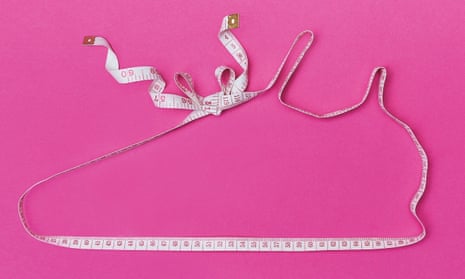A good way not to go running when you hate running is to decide that you can’t really start until you have the perfect shoe. It wasn’t even as simple as wandering round the shops: I had to get my gait analysed, which can happen one of two ways, on a running machine or, in one very special specialist shop in London, running down the road.
The Guardian’s product and service reviews are independent and are in no way influenced by any advertiser or commercial initiative. We will earn a commission from the retailer if you buy something through an affiliate link. Learn more.
Dipika is the owner of Run And Become, which was established in the 1980s by her parents. She looks like an advert put out by an interwar government on the benefits of exercise, serene and zesty, deeply plausible. We walk out to a side street and I run 50 yards while she watches: at that moment, still in my regular shoes, which we’ve established are a size too small but otherwise functional. If you are familiar with the oeuvre of Noel Streatfeild, imagine a ballet mistress observing a new pupil for the first time: keen-eyed, warm, yet dispassionate.
Obviously, I felt a complete fraud. “Heel-striker”, “neutral gait”: these are words you’d use about a person who did marathons. I have been running four times and pretended to go running a further three. The longest stint I’ve done in one go is 90 seconds, yet Dipika was talking me through the respective benefits of a variety of shoes for long distance. The only way I could have felt more like a trickster is if I’d stolen some socks on the way out.
The benefit of being analysed in the real world is that this is where most people run; you can tell more about the depth of your gait – the angle at which your foot hits the ground – and see tendencies and weaknesses better. Just by looking at me standing in front of her, Dipika noticed that I very slightly favoured my right leg over my left and asked if I had an old injury. I broke my left leg in 1978, which was before she was born.
Anyway, the overview of this analysis is this: if you pro-nate, your foot rolls inwards; if you’re a serious pronater, your arches will flatten to accommodate it. The opposite is supination, or under-pronation. I’m neither, I’m just passing this on for you: I have a neutral gait, and a pretty standard heel-strike. I need no particular support. I can wear some basic Basics.
On a running machine at the Saucony Stride Lab, my results are exactly the same, only the process is much more painful because it involves being videoed from every angle. This rams home the full amateurishness of my running style: exhaustingly long strides, head at a strange angle, like a person who that very second has decided to start running for the first time only because they are being chased.
But this is where I pick up tips – the main one being, shorter strides, which are more efficient and easier to control. I also get some trainers: chic white Sauconys with snazzy neon laces. They’re not the perfect shoe, so much as shoes so techie it would be inexcusable to wear them and not run.
What I learned this week
Save time and start by trying the size above your regular size.

Comments (…)
Sign in or create your Guardian account to join the discussion